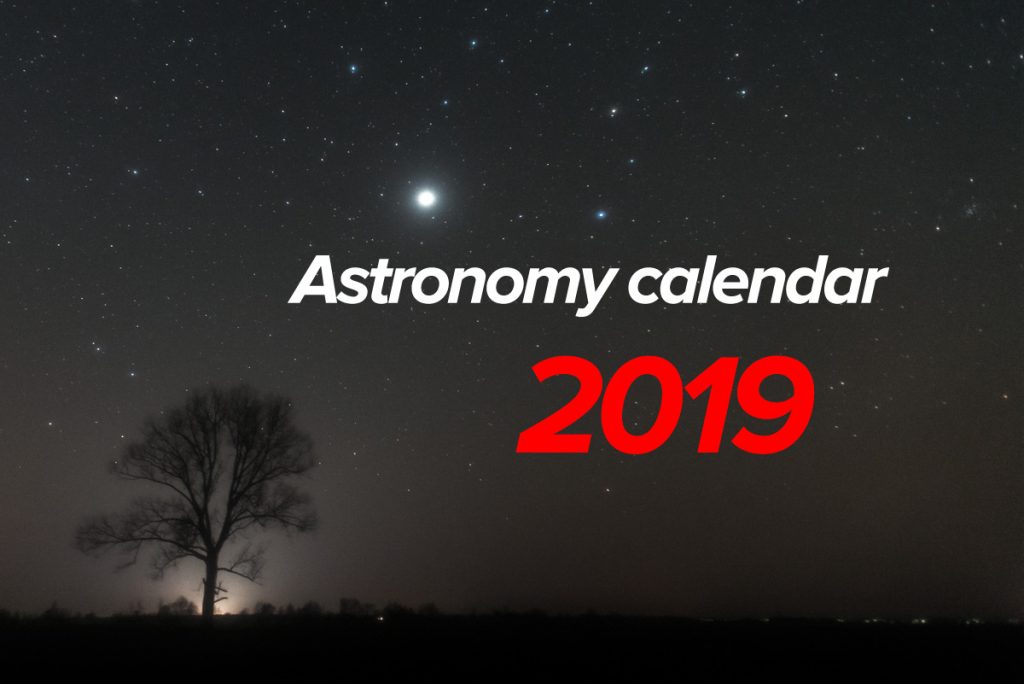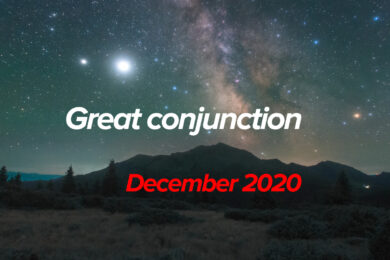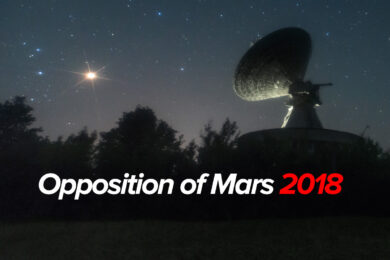Astronomy calendar for night landscapes 2019
This calendar was created for the needs of landscape photography.
You can download big and high quality .jpeg file here
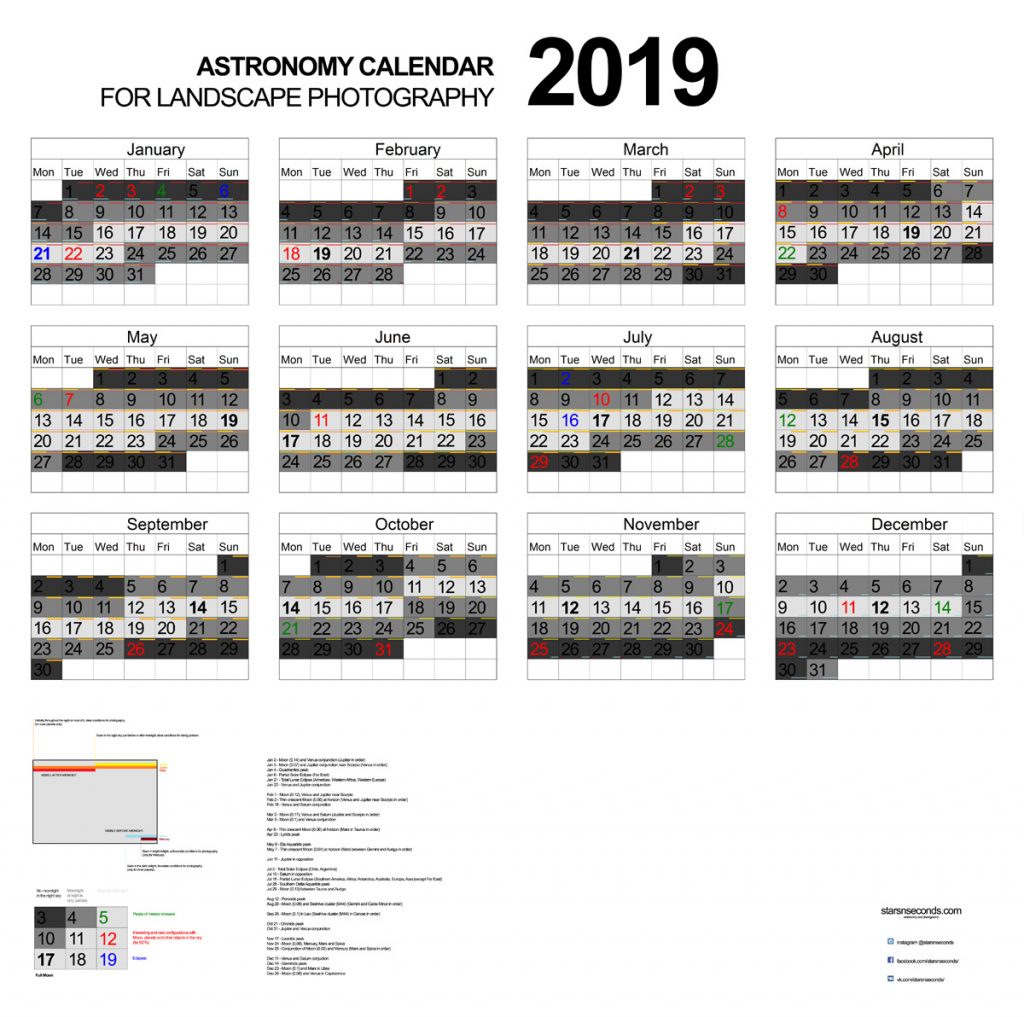 Things that have no practical significance for creating landscapes such as memorable and symbolic dates, occultations, Uranus, Neptune and asteroids are excluded from it.
Things that have no practical significance for creating landscapes such as memorable and symbolic dates, occultations, Uranus, Neptune and asteroids are excluded from it.
The calendar is based on the darkness of nights. I used to just divide everything into 3 phases of the Moon (>0.75, 0.75-0.25 and <0.25). But then I noticed that the angle of rise/set and the length of twilight also matter.
The dates of elongations for the inner planets are also not indicated. Such dates are misleading. The fact is that elongation will not always be the best time for shooting. Where the apparent magnitude and the angle of the orbit of the planet relative to the horizon are more important (this depends on the latitude and time of year).
The dates of the oppositions of the outer planets are indicated in this calendar. For Jupiter and Saturn, this is more a formality, but this moment still remains the best time to observe and photograph and this cannot be undone. Everything is obvious for Mars and on the night of opposition it is really great;)
Blue dates indicate eclipses, green ones indicate meteor showers, red ones indicate all kinds of events involving the planets and the Moon in a phase not exceeding 0.2. Only in such cases it will not illuminate the frame. This condition is important of creating landscapes. There is a focus on the successful placement of the thin crescent Moon and planets relative to the horizon, bright stars and remarkable constellations nearby. All connections and configurations with the Moon in phases greater than 0.2 are excluded from the calendar.
Indicators of the visibility of the planets are in each cell with a date. On the left there is visibility after midnight, on the right there is visibility until midnight. A full lane is the visibility throughout the night or most of the night (these are periods of opposition for the outer planets). The shortest indicator of visibility is already on a bright twilight sky. This is only for Mercury. In other cases, this is not relevant.
Under the calendar there is a legend with all the explanations.
Unfortunately, for all previous years, only I could apply this type of calendar in practice. Therefore, I want to share it and look forward to your impressions of working with the calendar. In the future I will try to correct all the shortcomings and make it even more convenient. Please leave comments about this.
As for the coming year I must say that it will be unsuccessful in general. Even a quick glance is enough to notice the two main meteor showers will occur in a bright moonlight, and Mars, Venus and Mercury will be out of access most of the time.
As a result, these most interesting configurations with planets of interest to the landscape will be much less. For example, the same calendar compiled by me for 2017 had as many as 58 red dates. In 2019, there are only 21 of them.
The only joy is the total lunar eclipse and the conjunctions of Venus with other planets. But all this is expected at the very beginning and end of the year. At this time, the probability of good weather in Europe is low. In the summer of this year there will be little interesting.
There is the list of most important events of 2019:
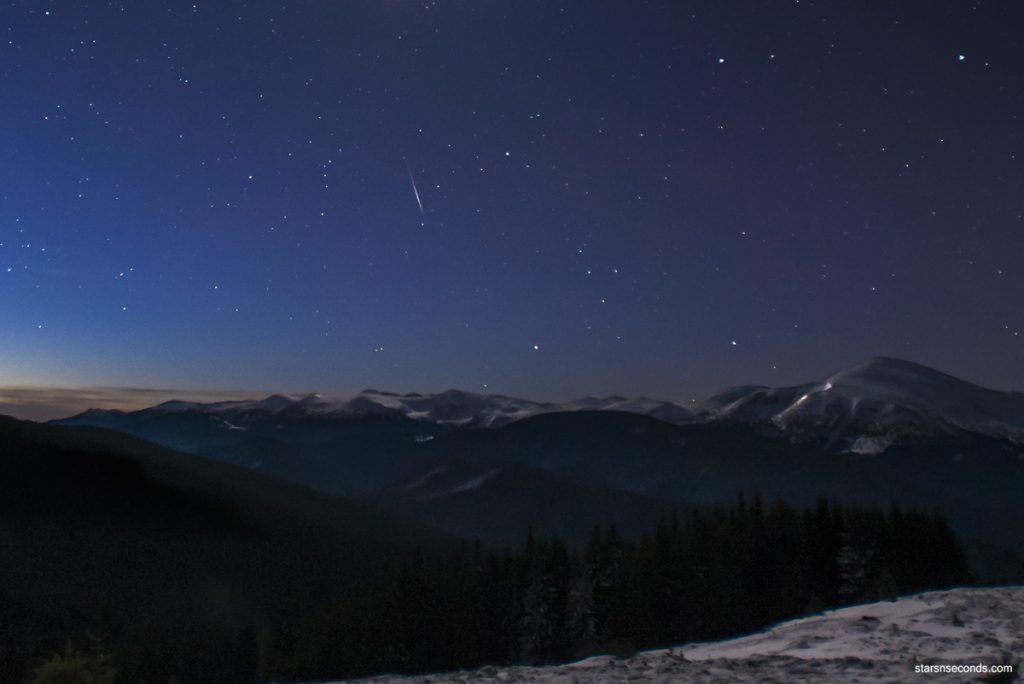
January 4, 2016
17mm (crop), f/2.8, 10s, ISO 1000
Jan 2 – Moon (0.14) and Venus conjunction (Jupiter in order)
Jan 3 – Moon (0.07) and Jupiter conjunction near Scorpio (Venus in order)
Jan 4 – Quadrantids peak
Jan 6 – Partial Solar Eclipse (Far East)
Jan 21 – Total Lunar Eclipse (Americas, Western Africa, Western Europe)
Jan 22 – Venus and Jupiter conjunction
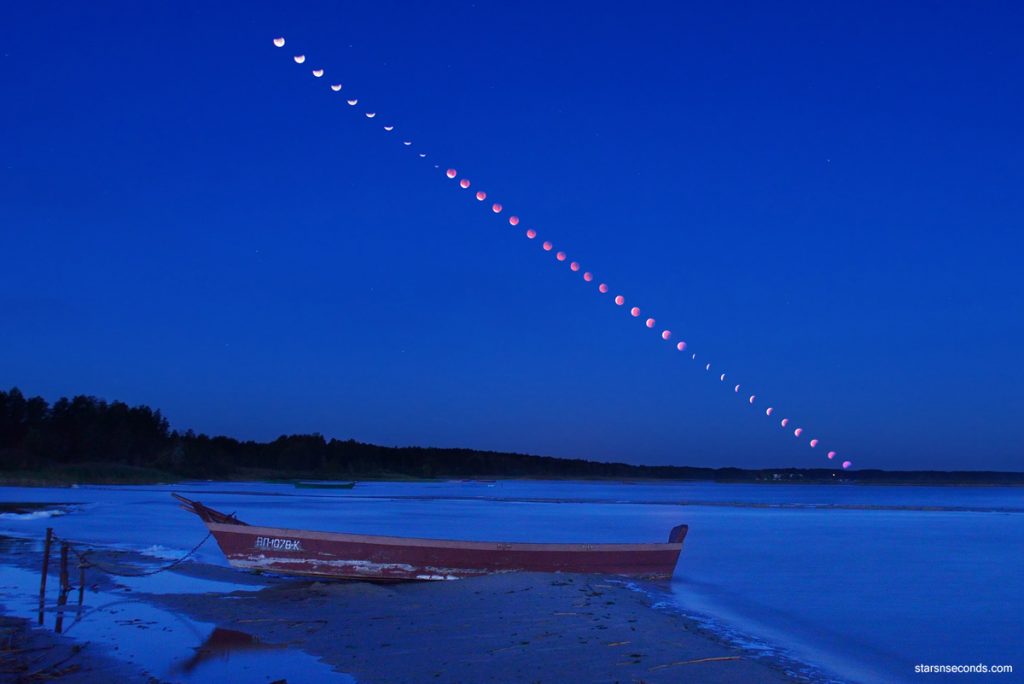
19mm (crop), different exposures for various phases and landscape
Feb 1 – Moon (0.12), Venus and Jupiter near Scorpio
Feb 2 – Thin crescent Moon (0.06) at horizon (Venus and Jupiter near Scorpio in order)
Feb 18 – Venus and Saturn conjunction
Mar 2 – Moon (0.17), Venus and Saturn (Jupiter and Scorpio in order)
Mar 3 – Moon (0.1) and Venus conjunction
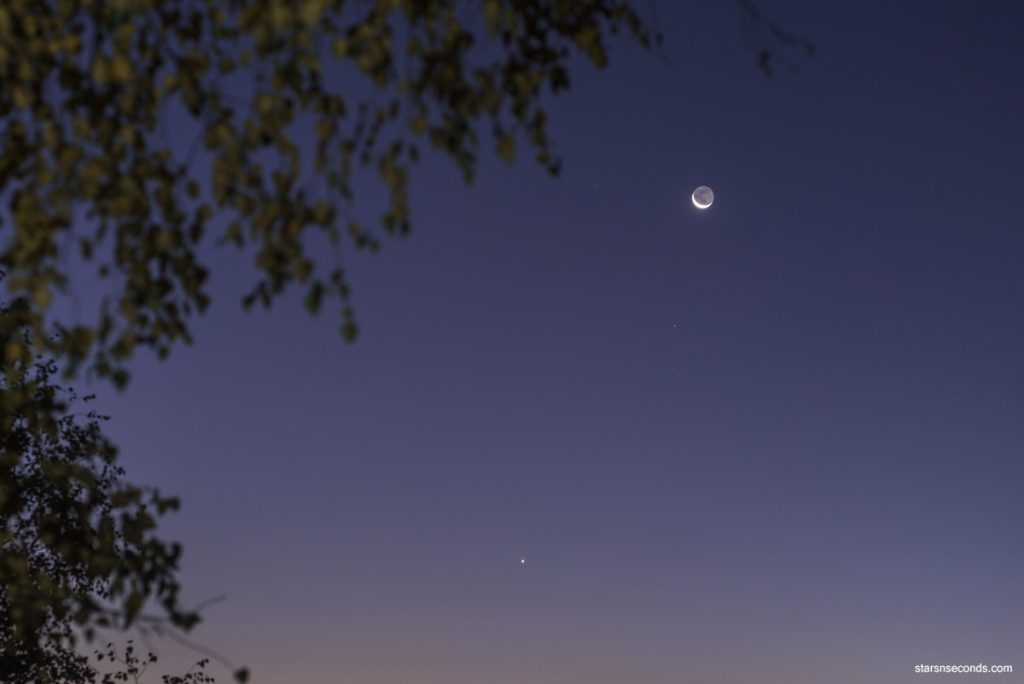
October 17, 2017
80mm, f/4, 2.5s, ISO 200
Apr 8 – Thin crescent Moon (0.06) at horizon (Mars in Taurus in order)
Apr 22 – Lyrids peak
May 6 – Eta Aquariids peak
May 7 – Thin crescent Moon (0.04) at horizon (Mars between Gemini and Auriga in order)
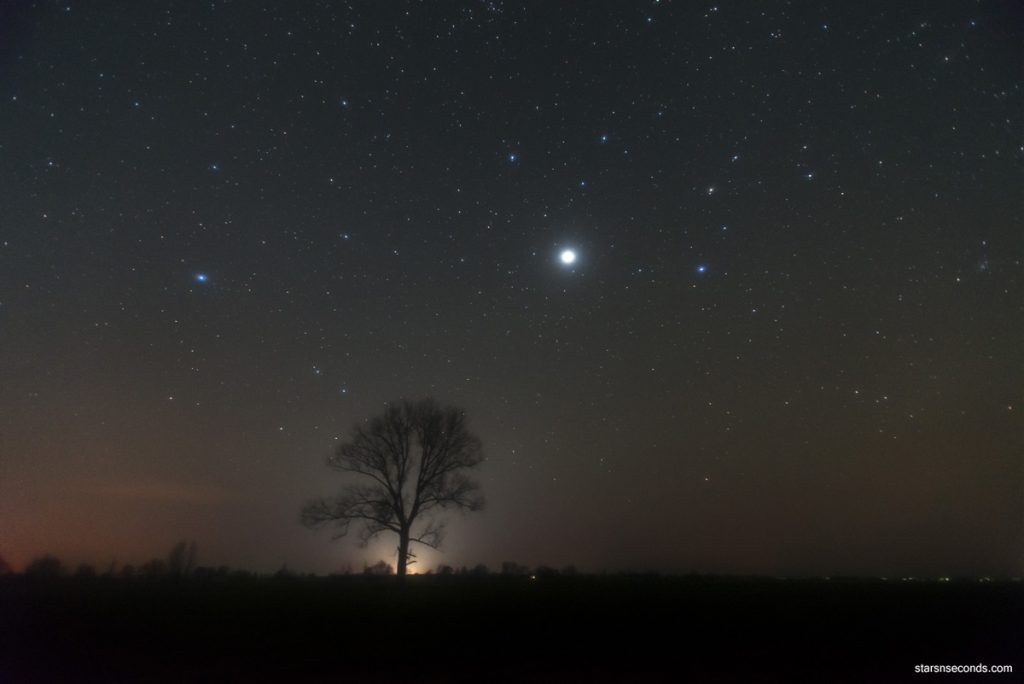
April 6, 2016
17mm, f/2.8, 4x20s, ISO 2500
Jun 11 – Jupiter in opposition
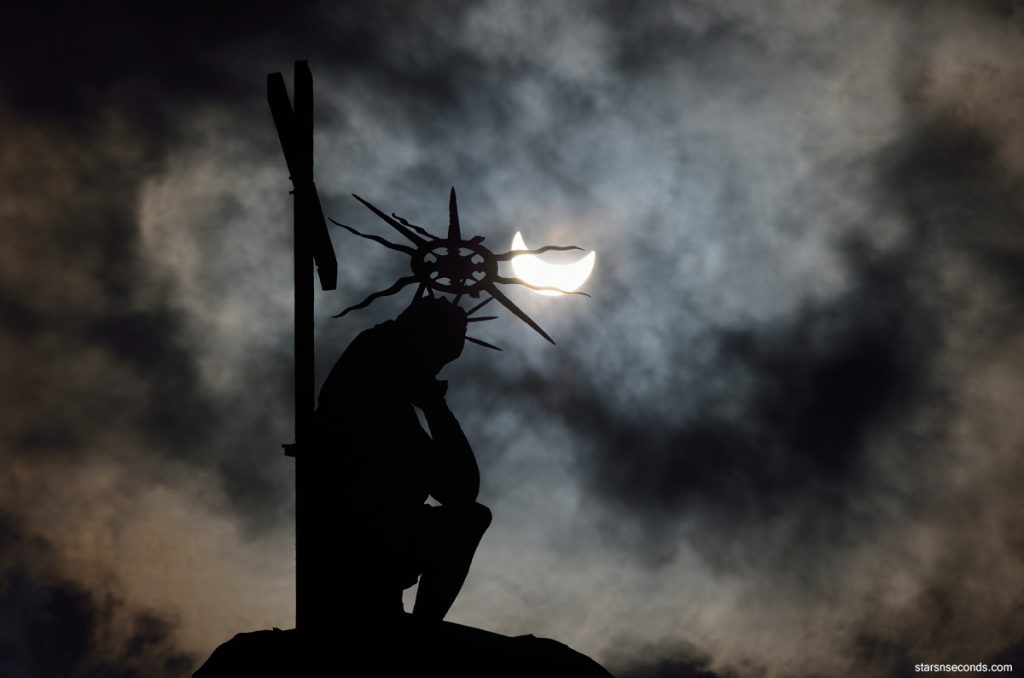
200mm, f/16, 1/8000s, ISO 100
Jul 2 – Total Solar Eclipse (Chile, Argentina)
Jul 10 – Saturn in opposition
Jul 16 – Partial Lunar Eclipse (Southern America, Africa, Antarctica, Australia, Europe, Asia (except Far East)
Jul 28 – Southern Delta Aquariids peak
Jul 29 – Moon (0.13) between Taurus and Auriga
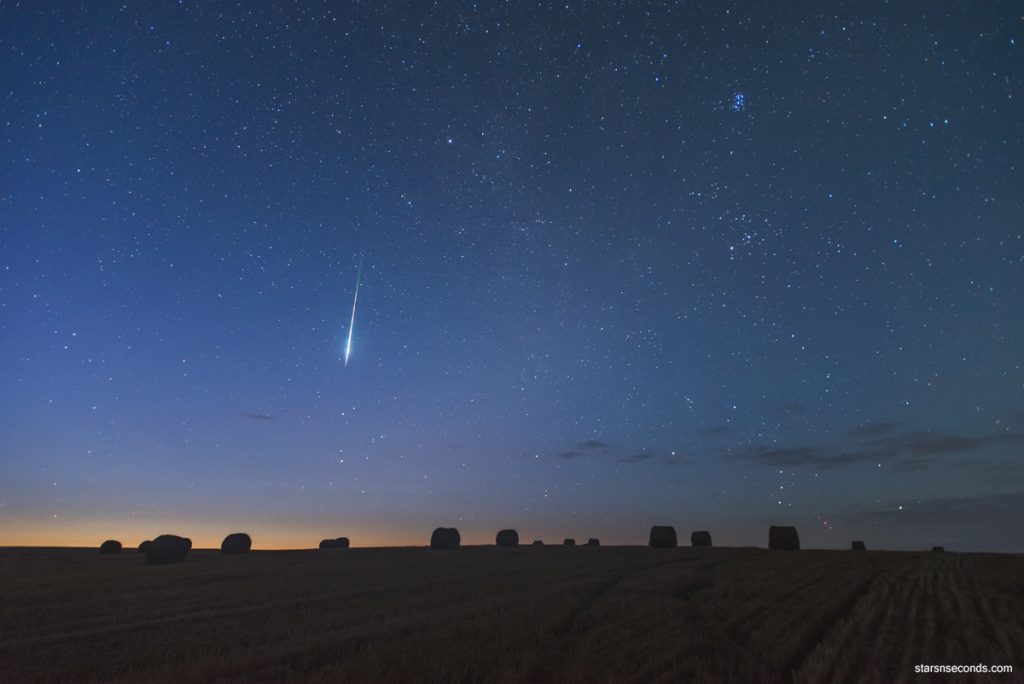
August 13, 2016
17mm, f/2.8, 15s, ISO 3200
Aug 12 – Perseids peak
Aug 28 – Moon (0.08) and Beehive cluster (М44) (Gemini and Canis Minor in order)
Sep 26 – Moon (0.1) in Leo (Beehive cluster (М44) in Cancer in order)
Oct 21 – Orionids peak
Oct 31 – Jupiter and Venus conjunction
Nov 17 – Leonids peak
Nov 24 – Moon (0,08), Mercury, Mars and Spica
Nov 25 – Conjunction of Moon (0.03) and Mercury (Mars and Spica in order)
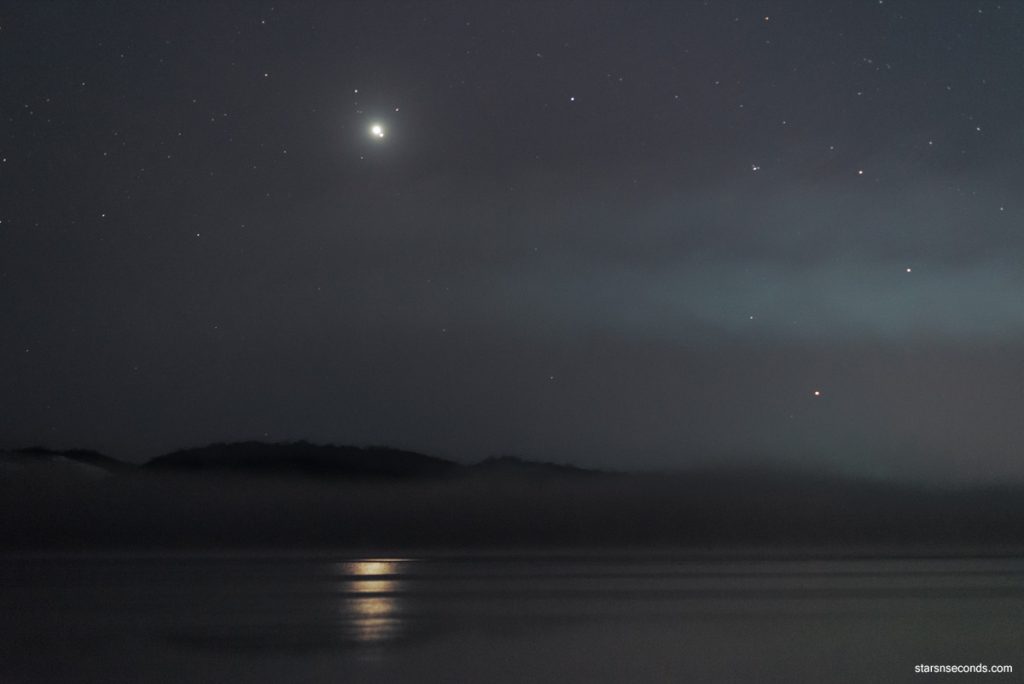
January 9, 2016
155mm, f/2.8, 4x3s, ISO 6400
Dec 11 – Venus and Saturn conjuction
Dec 14 – Geminids peak
Dec 23 – Moon (0.1) and Mars in Libra
Dec 28 – Moon (0.08) and Venus in Capricornus
Of course, besides all this, there are many seasonal phenomena that are not tied to a specific date. Therefore, I would like to create more detailed descriptions of future events before the start of each season or month.
